- Home
- Peter Ackroyd
Charlie Chaplin Page 2
Charlie Chaplin Read online
Page 2
There were happier moments. The young Chaplin earned a few pennies by dancing outside the doors of public houses to the melody of a passing accordion. One day Sydney found a purse of gold coins on a bus while selling newspapers. It may be, however, that he had stolen it. On the proceeds the Chaplins went down to Southend for their first sight of the sea. They swam, when they could afford it, at the Kennington Baths. They attended magic-lantern shows at the Baxter Hall, where admission cost a penny. Hannah, in moments of health and vitality, also managed to entertain them by imitating the expressions and movements of the people in the street below. Her youngest son may have inherited her pantomimic skills.
In an essay for Photoplay magazine in 1915 Chaplin wrote that “it seems to me that my mother was the most splendid woman I ever knew. I can remember how charming and well mannered she was. She spoke four languages fluently and had a good education … I have never met a more thoroughly refined woman than my mother.” Yet he may have overestimated her skills and virtues. A neighbour recalled that “he thought no one who ever lived was like his mother. The lad thought she was the cleverest player in the world, a great lady and his ideal.” Her nickname for her second son was “the King.” Such love, perhaps, is doomed to be disappointed.
Separation from her was soon to follow. In the spring of 1896 Hannah’s sewing machine was repossessed for lack of payment, and there was now no way of continuing her old trade. She succumbed once more to sickness and was taken to the infirmary. There was now no recourse for the Chaplin children but the local workhouse, the place that poor families most feared. “You’ll end up in the work’us!” was a familiar expression. So in May they were despatched to Southwark Workhouse, according to its register, “owing to the absence of their father and the destitution and illness of their mother.” Their bewilderment may be imagined. Nevertheless in the same article for Photoplay Chaplin declared that “English people have a great horror of the poorhouse; but I don’t remember it as a very dreadful place.” His strongest memory was “of creeping off by myself at the poorhouse and pretending I was a very rich and grand person … I was of a dreamy, imaginative disposition. I was always pretending I was somebody else …”
They remained in this institution for approximately three weeks while the Lambeth Board of Guardians pursued the supposed father, Charles Chaplin senior. He was eventually found and brought before the board; he agreed to take in Charles but not Sydney, on the grounds that the older child was clearly illegitimate. But the board believed it best that the boys should stay together, and Chaplin agreed to pay the sum of fifteen shillings a week to maintain them at Hanwell Schools, an institution twelve miles out of London. He never kept his promise of regular payment.
In the middle of June the two boys were taken in a horse-drawn baker’s wagon to Hanwell Schools for Orphans and Destitute Children. Here they were separated, Sydney at the age of eleven being taken to the upper division of the boys’ school while Charles at the age of seven was placed in the infant division. He later told a reporter that “my childhood ended at the age of seven.” Hanwell was a thoroughly Victorian institution, based upon a regimen of formal instruction, carefully arranged days and strong discipline. In that respect it did not differ very much from the great public schools of the period. The young inmates marched from class to class, and from dormitory to dining hall. Chaplin’s number was 151. In material respects, however, the children were much better cared for than their contemporaries consigned to the streets or slum dwellings. They were given warm clothes, good shoes, and a nourishing if plain diet.
But for the young Chaplin it was a place of suffering and humiliation. In later life he referred to it as “my incarceration.” He was separated from his mother and, after Sydney was sent to a naval training ship, from his brother. He had no one else in the world. He was small, and helpless, and hopeless. He contracted ringworm, and fell into what he called “paroxysms of weeping” when his head was shaved. He was detected in some piece of misbehaviour, the details of which are unclear. He may have peeked at a girl through her keyhole; he may have started a fire in the boys’ lavatory. The stories differ. Whatever the crime, the punishment was determined in advance: he received a slash or two with a birch cane. A little while afterwards he was prescribed a laxative and consequently soiled his bed. He was punished two days later by being denied the orange and boiled sweets handed out on Christmas Day. Yet despite his distress this was the only period of his life when he received any continuous education. He learned to write his own name and to read a little.
Hanwell Schools, 1857.
Courtesy of Peter Higginbotham Collection
Hannah did not visit him for almost a year, and it seems that he felt a profound sense of betrayal. When she eventually came to him in the summer of 1897, the young Chaplin was horrified and humiliated. He told a good friend, Harry Crocker, that “she caused me anguished embarrassment.” She may already have borne the marks of insanity that afflicted her family and had brought down her mother. He told Crocker that for some reason she was carrying an oilcan. “Why do you come with that, Mother?” he asked her. “Why do you come at all? They’ll all see you. They’ll all see you!” In My Autobiography he tells a different story of a fresh and fragrant woman coming to visit her lonely child. The reader must judge.
In later life he conceived a scene in which an old lady trudges up a staircase carrying a bucket of water; on the fourth or fifth landing a door suddenly opens, and a man punches her in the face. “Oh,” he says in horror, “I thought you were my mother.” “You have a mother?” “Yes,” he replies, weeping, “I have a mother.” Chaplin never really trusted women. He always feared loss and abandonment, slight and injury, indulging in paroxysms of jealousy on the smallest provocation. With his lovers he was suspicious and difficult and angry.
Yet he survived Hanwell by making himself invulnerable. “Even when I was in the orphanage,” he told his eldest son, “… even then I thought of myself as the greatest actor in the world. I had to feel the exuberance that comes from utter confidence in yourself. Without it you go down to defeat.” This invulnerability later became part of his screen persona. The Little Tramp, Charlie, is often detached and invincible. He always picks himself up and walks jauntily into the distance; in that respect, he shows indomitable energy and determination. He rarely becomes an object of pity.
So in the life of the small child we can see the seeds of the Little Tramp. In the earliest films he is often angry or cruel, wishing at all costs to take revenge on life and especially on those figures of authority who threaten him. He craves food and security. He desperately seeks love but never finds it. He has learned to cope with the vicissitudes of existence by affecting indifference. He is rootless, with no discernible home. Most of Chaplin’s later films, too, concern the art of survival in a hostile or unsympathetic world.
At the age of eight the young boy was discharged from Hanwell on 18 January 1898, and returned to his mother. Sydney came home from the training ship, Exmouth, two days later. The family were once more together. The nature of their life now is not known, although it could hardly have been a secure one. He may have been recollecting this period when he said to a companion, May Reeves, that “every four weeks we were evicted because we couldn’t pay the rent. Each time we had to pack up and carry our mattresses and chairs on our backs to a new house.” He and Reeves were walking around Kennington on one of his nostalgic visits to his old neighbourhood. He showed her a dilapidated grocery store. “How happy I was to be able to run there and buy something for tuppence.” Then he pointed to a shed. “I often spent the night in there when we were chased from our lodgings. But I preferred to sleep on park benches.”
It was perhaps inevitable that on 22 July the Chaplin family arrived at Lambeth Workhouse. They had not managed to survive the outer world. The two boys were after a week transferred to the poor-school in West Norwood to which Sydney had once been consigned. A strange episode followed. On 12 August Hannah Chaplin mana
ged to persuade the authorities that she was fit and able to look after her children. So they were released from the school into her care. Mother and children spent their day of freedom in Kennington Park, where they ate cherries on a bench and played catch-ball with a crumpled newspaper. It was a brief respite from the world that enclosed them. Hannah said brightly, at the end of the day, that they would just be in time for tea. She meant tea at the Lambeth Workhouse where they duly presented themselves, much to the annoyance of the officials who had to fill in once more all the appropriate forms. Three days later the boys were back in West Norwood. The world closed in again. Chaplin, in later life, said that parks always induced in him the sensation of sadness. He wrote, in a magazine article of 1931, “how depressing Kennington Park is.”
At the beginning of September Hannah Chaplin was taken from the workhouse to Lambeth Infirmary, with her body badly bruised. The authorities here attested that she was suffering from syphilis, which in its third stage may attack the brain. The diagnosis was never repeated by later physicians, but it is perhaps significant that it could be made in her case. Nine days later she was moved again; she was consigned to Cane Hill asylum in Surrey, where a doctor recorded her behaviour. “Has been very strange in manner—at one time abusive & noisy, at another using endearing terms. Has been confined in PR [padded room] repeatedly on a/c of sudden violence—threw a mug at another patient. Shouting, singing, and talking incoherently. Complains of her head and depressed and crying this morning—dazed and unable to give any reliable information.” She asked the doctors if she were dying. She told them that she was on a mission from the Lord. Then she stated that she wished to get out of the world.
Two nurses went to West Norwood to acquaint the boys with their mother’s condition. Sydney finished a soccer game and then burst into tears. Charles did not cry, but began to blame his mother for betraying him. In truth she had succumbed to hereditary madness which she was too ill and weary to withstand.
It was now determined that Charles Chaplin senior had to take responsibility for the two boys. So they were driven in a van from Lambeth Workhouse, where they had once more been assigned, to an unprepossessing house at 287 Kennington Road where Chaplin lived on the first floor with his mistress, Louise, who did not welcome the arrival of unwanted children. On the frequent occasions when she was drunk, she complained bitterly of the imposition laid upon her by the presence of the boys. She conceived a particular dislike for Sydney, who avoided her company by staying away from morning to midnight.
Chaplin senior himself was in the last stages of his career; his popularity had waned and, as the bookings grew less frequent, he consoled himself with drink. On the nights when he did perform, he could be charming and expansive; he had six raw eggs in a glass of port before leaving for the hall. But he often spent all day and all evening in some of the many public houses of the neighbourhood, trying to drown his anxiety and frustration. His youngest son watched him closely; he would one day make a speciality of “drunk routines.”
Chaplin senior’s drunkenness gave rise to more bitterness in Louise, which she vented on the boys. Charles returned one Saturday morning after school to find the flat deserted and the larder empty. He waited, but nobody came. In desperation he walked into the street, and spent the afternoon visiting the various markets of the neighbourhood. He had no money, and no food. He wandered until nightfall, and then returned to Kennington Park Road; but the flat was in darkness. He walked the few yards to Kennington Cross where he sat on the kerb and waited. Two musicians, one with harmonium and the other with clarinet, were playing an old-fashioned tune outside the White Hart public house; it was called “The Honeysuckle and the Bee” and it so enchanted Chaplin that he crossed the road to get closer to the melody. He would remember the song all his life.
When he went back to the house, he saw Louise making her way down the garden path. She was staggering drunkenly, and he waited until she had closed the door. Then he slipped in with the landlady of the house who had suddenly returned. He went up to the darkened landing. Louise came out, and ordered him to leave. He did not belong there. On another occasion a policeman reported seeing Sydney and his young brother, at three in the morning, sleeping by a night watchman’s fire. This was the life which the young Chaplin was obliged to lead.
On 12 November, Hannah Chaplin knocked on the door. She had been discharged from Cane Hill, and had come to take them away. She took them round the corner to a small lodging in Methley Street, where she earned a bare income by sewing together blouses. The odours of Hayward’s pickle factory behind them competed with the stench of a slaughterhouse beside them. Yet South London people were inured to smells.
The Chaplins’ landlady at Methley Street recalled that “Charles was rather a frail child with his mop of dark hair, his pale face and bright blue eyes. He was what I call ‘a little limb’—out in the streets from morning to night. I remember he was a regular one for finding a man with a barrel organ, and dancing to the music. He got a lot of extra money for the organ grinder and a few coppers for himself. I suppose that’s how he started becoming an entertainer. Charlie was supposed to go to school in Kennington, but he was an awful truant.”
His days at school were in fact coming to an end. His last recorded attendance there was on Friday 25 November 1898, after which date he was to be found upon the music-hall stage. He had become a professional dancer.
2
On Stage
At the end of 1898 the young Chaplin joined a troupe of professional clog-dancers billed as “The Eight Lancashire Lads.” He may have obtained the employment through the agency of Charles Chaplin senior since the troupe’s founder, William Jackson, lived a few doors away along Kennington Road; the boy’s experience as a street performer may also have worked in his favour. He was given board and lodging during each tour, and Hannah Chaplin was sent half a crown a week. She may not have considered it to be ideal work for her younger son, but at least it provided the family with a steady additional income.
The “Lancashire Lads” were described by one trade newspaper as “a bright and breezy turn, with a dash of true ‘salt’ in it.” They performed for ten minutes and produced “some of the finest clog-dancing it is possible to imagine.” Each boy wore a white linen blouse, a lace collar, knickerbocker pants and red dancing shoes. Clogs were a form of footwear for hard labour in the mines and factories of the north of England; to dance in them, with agility and grace, was a sign of triumph and freedom from misfortune or servitude. This might be a reflection of the young Chaplin’s spirit. He rehearsed for some six weeks, while the troupe were appearing in Manchester, before being allowed to appear on stage for the first time at Portsmouth. He suffered from stage fright, and a further few weeks passed before he could perform a solo dance.
William Jackson’s son recalled that “he was a very quiet boy at first … and he wasn’t a bad dancer.” He added that “my first job was to take him to have his hair, which was hanging in matted curls about his shoulders, cut to a reasonable length.” He also recalled that the young Chaplin was already “a great mimic.” From Portsmouth the “Lancashire Lads” went on to London, Middlesbrough, Cardiff, Swansea and Blackpool. They were rarely out of work. In London and other cities they would dash from theatre to theatre, in a cab or horse-drawn cart, often with the announcement that “we must hurry along to our next hall.” It was exhausting work. The theatres had the odour of oranges and beer, of unwashed bodies and tobacco; they were loud and rowdy places, where the audience might engage in impromptu dances or violent squabbles. Prostitutes would wander at the back of the gallery. The people could be ferocious but were easily pleased; they sang along with the familiar songs, and called out the catchphrases of their favourite comedians.
Chaplin could not have had a better training in the discipline of song-and-dance. He also took the opportunity of studying the clowns and comedians who appeared on the same bill with him. He told a reporter in 1917 that “every move they made registere
d on my young brain like a photograph. I used to try it all when I got home … My earliest study of the clowns in the London pantomimes has been of tremendous value to me.” He even considered joining another member of the troupe, a boy named Bristol, in a double act called “Bristol and Chaplin, the Millionaire Tramps.” Comedy tramps were a staple of the stage, with “tramp jugglers” and “tramp cyclists” among them.
The life of the music hall was a tough and demanding one. Any single act would last for a short time, between five and fifteen minutes, in front of an often raucous audience generally animated by alcohol. Mesmerists and magicians, acrobats and comedians, would vie for applause and attention; an inattentive audience spelled death to a performer. The songs of the music hall were often devoted to the woes of the working class, to the little details of social and domestic life, to the perilous life on the edge of downright poverty; they were filled with broad humour or more subtle sexual innuendo.
The sketches of the comics and mimes were often set in pawnshops, in cheap lodging houses, or in restaurants; the characters included waiters, tramps and men down on their luck known as “the shabby genteel.” Some of them would dress oddly, or walk comically, or make use of such props as umbrellas and walking sticks. They would inspire Chaplin’s early films. The most successful artists could sustain the same part over many years, while others preferred variety and variation. The important point was that, in the words of a music-hall paper of the period, “originality goes a long way towards creating his [the artist’s] success in life. What does originality consist of? Personality, to a large extent.” Chaplin was to make an art out of personality.

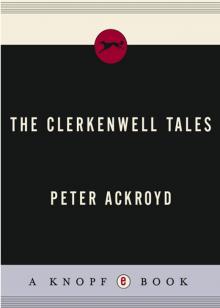 The Clerkenwell Tales
The Clerkenwell Tales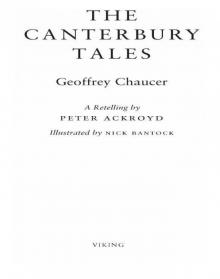 The Canterbury Tales
The Canterbury Tales J. M. W. Turner
J. M. W. Turner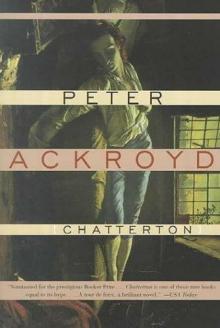 Chatterton
Chatterton The Canterbury Tales – A Retelling
The Canterbury Tales – A Retelling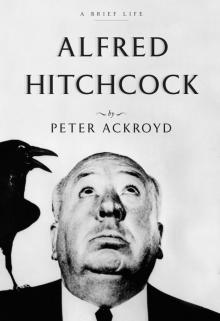 Alfred Hitchcock
Alfred Hitchcock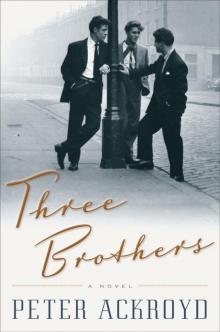 Three Brothers
Three Brothers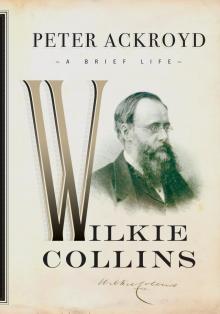 Wilkie Collins
Wilkie Collins Venice
Venice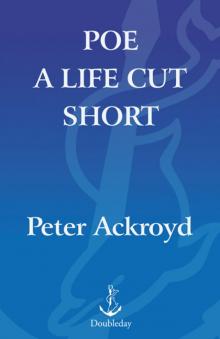 Poe
Poe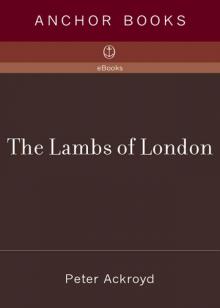 The Lambs of London
The Lambs of London London
London Queer City
Queer City Revolution, a History of England, Volume 4
Revolution, a History of England, Volume 4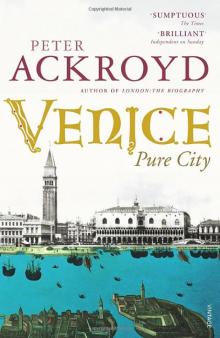 Venice: Pure City
Venice: Pure City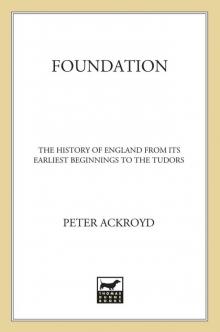 Foundation
Foundation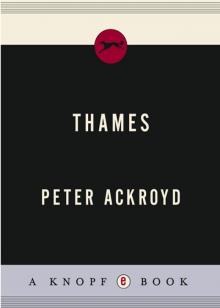 Thames
Thames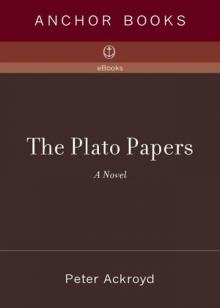 The Plato Papers
The Plato Papers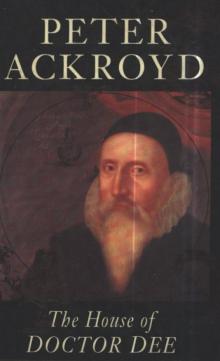 The house of Doctor Dee
The house of Doctor Dee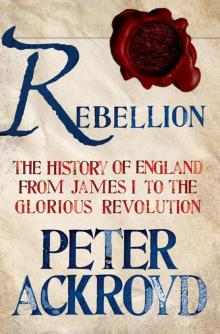 Rebellion: The History of England from James I to the Glorious Revolution
Rebellion: The History of England from James I to the Glorious Revolution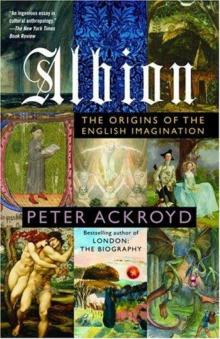 Albion: The Origins of the English Imagination
Albion: The Origins of the English Imagination The Fall of Troy
The Fall of Troy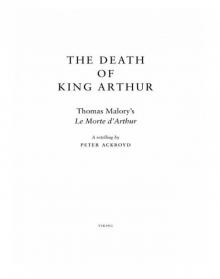 The Death of King Arthur
The Death of King Arthur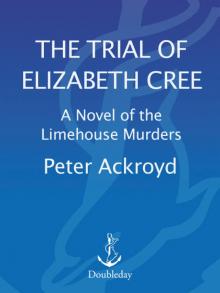 The Trial of Elizabeth Cree
The Trial of Elizabeth Cree London: The Biography
London: The Biography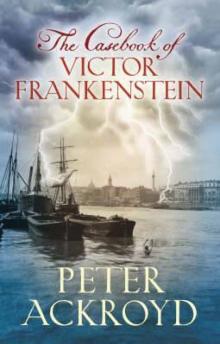 The Casebook of Victor Frankenstein
The Casebook of Victor Frankenstein Hawksmoor
Hawksmoor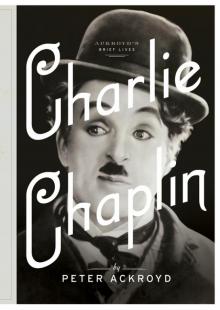 Charlie Chaplin
Charlie Chaplin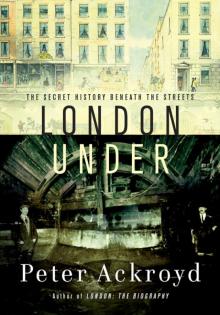 London Under
London Under